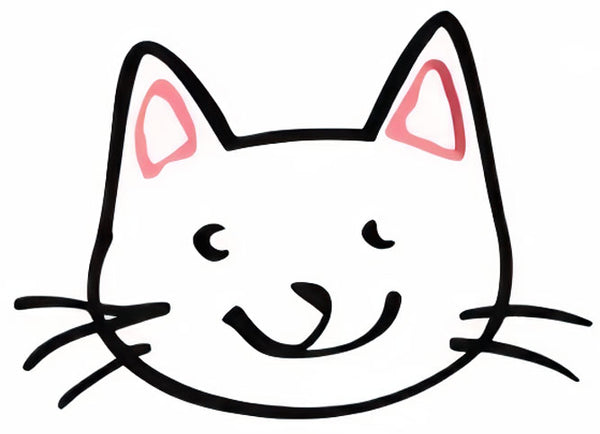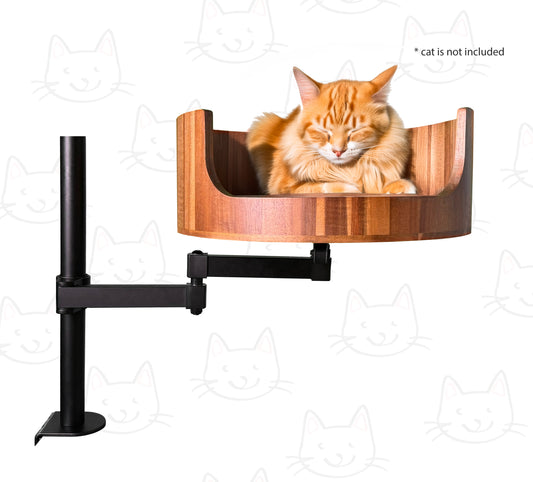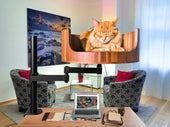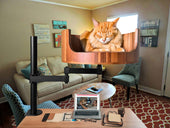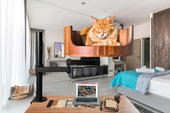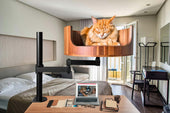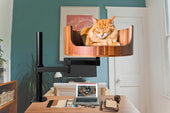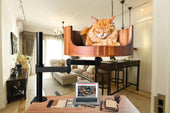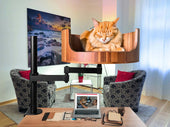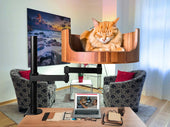
Why Does My Cat's Tail Wag When I Pet Her?
Share
Have you ever noticed your cat's tail wagging when you pet her? This common behavior can often leave pet owners puzzled. Cats are known for their mysterious and sometimes unpredictable behaviors, and understanding why they do the things they do can help strengthen the bond between you and your feline friend.
In this article, we will explore the reasons behind why cats' tails wag when they are being petted. From the physical response to the emotional signals they are sending, there are various factors at play when your cat's tail starts swaying back and forth. By learning more about this behavior, you can better understand your cat's needs and preferences, ultimately leading to a happier and healthier relationship. So next time your cat's tail starts wagging, you'll know exactly what she's trying to tell you.
1. A cat's tail wagging while being pet is a common behavior that can indicate different emotions, such as contentment or overstimulation.
2. Understanding your cat's body language can help you gauge their mood and adjust your interactions accordingly.
3. Tail wagging can also be a way for a cat to communicate with you or other pets in the household.
4. It is important to pay attention to other cues, such as purring or ear position, to get a complete picture of your cat's state of mind.
5. Each cat is unique, so it's important to learn your cat's individual cues and preferences for petting.
Understanding Cat Behavior
Cats use their tails as a form of communication, displaying various emotions through different tail movements. When you pet your cat, her tail may wag as a sign of contentment or pleasure. This behavior indicates that your cat is enjoying the physical contact and sees you as a source of comfort and affection.
Signs of Aggression
In some cases, a cat's tail wagging while being petted may also signal agitation or annoyance. It is essential to pay attention to other body language cues such as ears flattened back, dilated pupils, or growling to determine if your cat is feeling uncomfortable or upset. If these signs are present, it may be best to give your cat some space and let her come to you when she is ready for interaction.
Individual Preferences
Just like humans, cats have individual preferences and personalities. Some cats may love being petted and will wag their tails happily, while others may not enjoy physical contact as much. It is crucial to respect your cat's boundaries and pay attention to her body language to ensure she feels comfortable and safe during petting sessions.
Building Trust and Bonding
Petting your cat can help strengthen the bond between you and your feline companion. By understanding your cat's tail language and responding to her cues appropriately, you can build trust and create a positive and rewarding interaction. Spending quality time together through gentle petting sessions can help deepen the connection between you and your cat.
Desk Cat Nest FAQ
Why does my cat's tail wag when I pet her?
When your cat's tail wags while you're petting her, it is usually a sign that she is feeling content and happy. Cats often use their tails as a form of communication, and a relaxed, slow wagging tail is typically a positive indicator of your cat's mood.
Is it normal for my cat's tail to wag while being pet?
Yes, it is normal for cats to wag their tails while being pet, especially if they are enjoying the interaction. However, it's important to pay attention to your cat's body language in general to ensure that she is comfortable and not feeling stressed.
Should I stop petting my cat if her tail is wagging?
Not necessarily. If your cat's tail is wagging in a relaxed and slow manner, it likely means that she is enjoying the attention. However, if her tail starts flicking or thrashing rapidly, it could be a sign that she is becoming overstimulated and it may be best to give her a break.
How can I tell if my cat is wagging her tail out of enjoyment or frustration?
Pay attention to your cat's overall body language and other cues she may be giving. If she is purring, has a relaxed posture, and is seeking out more petting, her wagging tail is likely a sign of contentment. On the other hand, if she is tensed up, ears are flattened, or showing signs of agitation, her wagging tail may indicate frustration or discomfort.
In conclusion, understanding why your cat's tail wags when you pet her is a key factor in strengthening your bond and improving her overall well-being. Providing a comfortable and secure space for her, such as the Desk Cat Bed, can enhance this experience even further. The Desk Cat Bed offers a cozy retreat for your feline friend to relax and feel safe, promoting a sense of security and contentment. By investing in a Desk Cat Bed, you are not only giving your cat a comfortable place to rest, but also fostering a deeper connection with her through increased relaxation and feelings of security. Make the smart choice with a Desk Cat Bed for a happier and healthier relationship with your beloved pet.
